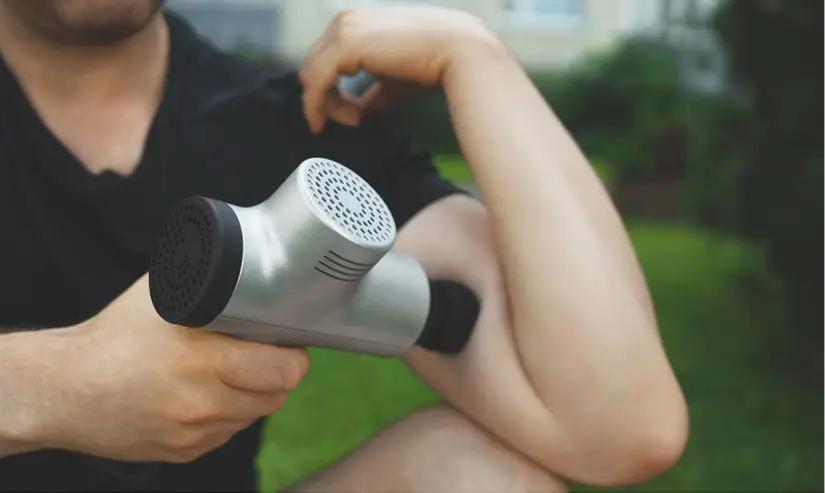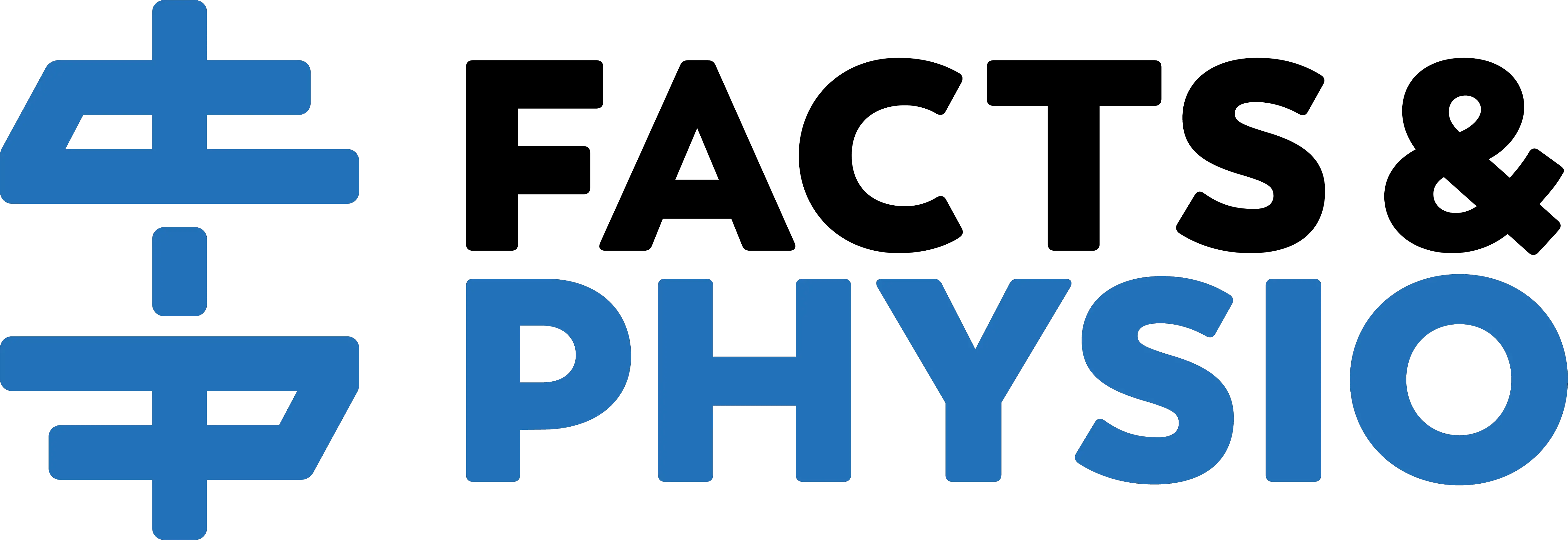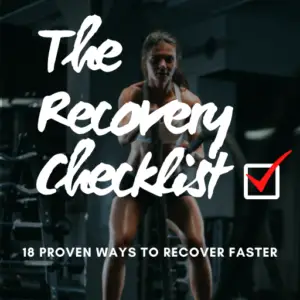Pain shoots from your elbow to your thumb as you lift a heavy box out of the car. That’s weird, you think. I’ve never had thumb problems. Aren’t I too young for arthritis?
What could it be? Carpal tunnel syndrome? Maybe a pinched nerve in your neck? Maybe.
Another possibility: your brachialis, an elbow muscle notorious for causing thumb pain!
Brachialis muscle pain causes discomfort bending the elbow, lifting weights, and carrying heavy objects. It creates deep elbow pain, sends pain to the front of the shoulder, and even mimics thumb arthritis.

This article covers everything you need to know about the brachialis, including how to relieve pain from this arm muscle.
Where is the Brachialis?
The brachialis muscle lies underneath the biceps brachii muscle, the arm muscle lifters love to flex. The brachialis is an unsung hero–a well-developed brachialis muscle elevates the biceps and makes the arms bigger and stronger.

The brachialis originates on the lower half of the humerus (upper arm bone) and attaches to the ulna (medial forearm) just below the elbow. It’s powered by the musculocutaneous nerve (C5, C6) which also innervates the biceps muscle. The radial nerve (C7) also innervates the brachialis 82% of the time (1).
To palpate your own brachialis, relax your elbow at a 90 degree angle with your palm down. Push into the brachialis. You’ll find it lateral to your biceps, on the front and side of your upper arm.

You may feel tight, tender spots in this muscle. These sore areas are called trigger points.
What Does Brachialis Pain Feel Like?
Brachialis trigger points cause referred shoulder pain, upper arm pain, and thumb pain. Brachialis muscle injuries also create local pain near the front of the elbow. Deep elbow pain is a common characteristic of brachialis muscle problems.
What Does the Brachialis Do?
The brachialis flexes (bends) the elbow. In daily life, it plays a crucial role in carrying boxes, lifting toddlers, and pulling small dogs out of danger–away from cats, raccoons, and hawks.
Bodybuilders and less dedicated lifters target the brachialis muscle with hammer curls and curl variations with the palms down. Regular biceps curls, or lifting with the palms facing upward, target the biceps more than the brachialis.
What Causes Brachialis Muscle Pain?
Brachialis muscle pain affects individuals who forcefully and repetitively contract their elbow muscles. Pain occurs during activities like lifting, carrying and gripping. These are common causes of brachialis pain:
- Manual labor
- Construction work
- Auto repair
- Rock climbing (Climber’s elbow, aka golfer’s elbow, is a different condition affecting the wrist flexors)
- Biceps curls
- Doing a lot of pull ups
- Overhead sports
- Crossfit
- Olympic weightlifting
- Bodybuilding
- Powerlifting
An acute injury to the brachialis can occur with a hard blow to the elbow or falling on the arm. To get your elbow pain diagnosed and treated appropriately, consult with a qualified healthcare provider, like a physical therapist or medical doctor.
Fortunately, brachialis muscle pain usually recovers on its own. It rarely requires surgery. Conservative treatments such as manual therapy and progressive strengthening help the brachialis muscle recover faster. Severe cases and complete tears are rare, but may warrant surgical intervention.
7 Treatments for Brachialis Pain
These seven treatments can relieve brachialis pain quickly.
1) Soft Tissue Mobilization
Try this technique on yourself, or have a trusted loved one massage your brachialis. You don’t want someone working out deep-seated relationship issues on your arm!

Use your thumb or fingers to apply pressure to the brachialis muscle belly near the front of your elbow. Stay on the lateral side of the biceps tendon.
Apply gentle pressure into sore areas of the brachialis. Hold sustained pressure on the most tender spots. This type of trigger-point work improves blood flow to the muscle and alleviates muscle pain (2).
2) Dry Needling
Trigger point dry needling is like massage therapy and myofascial release on steroids. It’s uncomfortable, but it’s a powerful way to treat trigger points in the brachialis muscle. Especially since the brachialis is difficult to massage due to its location underneath the biceps.
To learn more about this incredible treatment technique, check out The Authoritative Guide to Dry Needling.
3) Brachialis Stretch
I’m not a fan of stretching. But I make an exception for the brachialis. And for good reason. A tight brachialis will keep the elbow in the flexed position.
The elbow joint isn’t an area you want to get stiff. It’s laborious to regain full elbow straightening if the joint gets stuck in a flexed position.
So use gentle range of motion exercises to straighten the elbow and maintain full motion.

Perform as shown here, grabbing above the wrist and pushing down to straighten the elbow. Add more force on the wrist to create a deeper stretch.
4) Percussion Therapy
You’ve likely heard of percussion therapy, a hot trend in fitness and recovery. Athletes love using massage guns like the Theragun and Hypervolt to reduce muscle pain and recover faster.

Research shows this treatment improves range of motion without reducing muscle strength (3). It’s also thought to reduce post-workout muscle soreness.
I use percussion therapy in the PT clinic to reduce muscle tone and alleviate patients’ pain. It’s my patients’ favorite treatment.
There are many percussion therapy tools you can use. Here are 3 great options:
Theragun PRO
This is a top-of-the-line massage gun. It comes with 6 different attachments and a rotating arm for easy ergonomics. It feels amazing on sore, tight muscles. Plus, it’s a quiet model with preloaded routines.
It’s easy on the body, less so on the wallet. Check the price here.
Hypervolt Plus
I use the Hypervolt in the PT clinic. My patients love it. It has 3 speeds and 5 attachments. The battery last up to 3 hours between charges.
At half the price of the Theragun Pro, it’s a sturdy, high-value option. See it on Amazon here.
Renpho Massage Gun
This one is a budget-friendly option for giving your muscles some TLC. Plus, it’s rated 4.5 on Amazon (over 37,000 reviews) and comes with 5 attachments.
5) Elbow Flexion Isometrics
Loading is the biggest determinant of muscle pain recovery. Overloading, whether by overuse or a traumatic injury, leads to muscle pain.
For recovery, it’s important to reduce the load enough to allow the healing process to occur. Avoid repetitive movements that strain the brachialis.
As pain eases, transition to light strengthening exercises to make the muscle more durable and injury-resistant. Isometric exercises are a great first step for reloading the aggravated muscle.

Position the arm with the palm down or palm facing inward to reduce the biceps muscle activation. These positions target the brachioradialis muscle along with the brachialis.
You can perform this exercise by pushing up on the underside of a table, or simply holding a weight in front of you. Hold for 5-10 seconds. Repeat 10-15 times. Add weight or force as symptoms permit.
6) Dumbbell Reverse Curls
Hold a light dumbbell with the palms down. Slowly bend and straighten the elbow to strengthen the brachialis muscle.

Aim for 10-20 repetitions, and slowly add weight over time. Mild discomfort is okay during strength exercises, but pain should return to baseline within a few minutes.
7) Dumbbell Hammer Curls

Hold a dumbbell or resistance band with a palm facing inward, like you would hold a hammer. Slowly bend and straighten the elbow, keeping your arm at your side. Shoot for 10-20 repetitions and add weight as you get stronger.
The Best Treatment
The good news is that brachialis muscle pain responds well to physical therapy. Consult with a physical therapist to determine the best treatment plan for your situation.
Physical therapists are trained to evaluate elbow problems, determine the source of your pain, and guide you to the best treatment options.
PTs also know when it’s time to send you to an orthopedic physician–if your pain doesn’t improve or if your symptoms indicate something more serious like joint instability, nerve injury, fracture, etc.
In short, get professional help to accelerate your recovery.
Readers: Have you dealt with elbow pain? What treatments helped you? Which ones didn’t? Let me know in the comments.
For more recovery insights you won’t find anywhere else, join the free, fast-growing Facts & Physio Newsletter. Plus, get The Recovery Checklist when you sign up.


3 thoughts on “How to Fix Brachialis Muscle Pain (7 Proven Treatments)”
I am curious about rehab or surgery options to repair a partial thickness tear in the Distal Brachialis Tendon.
It’s worth discussing your options with an orthopedic physician and an orthopedic physical therapist. Most injuries like the one you describe don’t require surgery, but I can’t speak to your specific situation.
Hi
I got brachialis pain in connection with having tennis-elbow and a fall on my elbow (padel-tennis).
How are these to things connected physiological and treatmentwise ?
Best
Jens